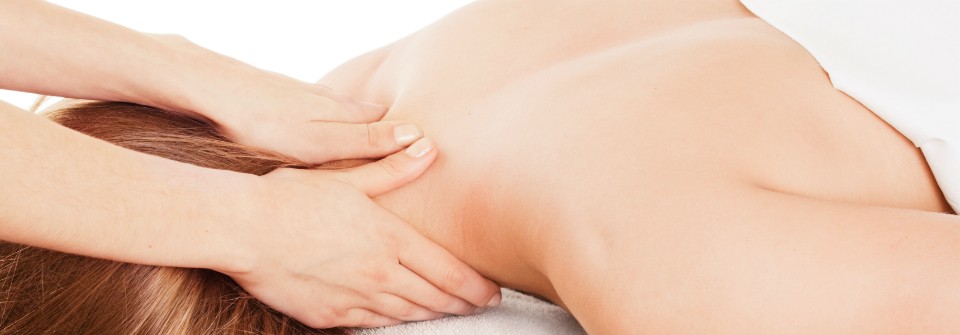Deep tissue massage is the main type of massage we provide at our clinic, yet despite its popularity there remains many misunderstandings around the practice – such as who it may be suitable for, what it can achieve and whether or not the treatment is painful.
Understanding the details of deep tissue massages can not only allay any fears about the practice, but can also help those who will benefit from the treatment.
What is a deep tissue massage?
A deep tissue massage is a form of massage therapy that specifically aims to realign deep layers of muscles. Typically it’s most commonly advised for those who play sport regularly, suffer from chronic aches and pains, as well as localised areas that may be contracted (or tight), including a stiff neck and upper back. It can also release leg muscle tightness and generally sore shoulders.

What benefits can be derived from a deep tissue massage?
The benefits of deep tissue massage are far and wide ranging and can treat, release and overcome the following conditions:
– Piriformis syndrome
– Tennis elbow
– Postural problems
– Reduced mobility
– Recovery from injuries (such as whip lash and various injuries sustained during sports)
– Muscle tension, cramps or spasm
– Repetitive strain injury (including carpal tunnel syndrome)
– Osteoarthritis pain
– Sciatica
– Chronic pain
– Lower back pain
– Fibromyalgia
Because of the benefits that can be delivered with deep tissue massages, they are popular with an array of sports people, including runners, tennis players, bodybuilders and triathletes.
How is a deep tissue massage different from a Swedish massage?
Swedish massages are focused upon increasing the circulation of the circulatory system and lymph nodes, ultimately cleaning and nourishing the tissues throughout the body. Such massages lengthen, relax and stretch superficial muscles.
By comparison deep tissue massages work upon deeper layers of muscle, and ultimately create micro-tears in the fascia, which then allows the body to fill the tears with collagen and elastin.

Types of strokes
There are five main forms of deep tissue massage strokes:
1) Active Motion
This stroke involves the patient working alongside the therapist to flex and stretch their muscles, whilst the therapist applies pressure firmly.
2) Passive Motion
In many ways passive motion is similar to active motion, however the only exception is that the therapist applies pressure with one hand, whilst moving the body part being worked upon with their other hand.
3) Static Pressure
Static pressure involves the therapist applying firm pressure to certain points on a muscle; using their thumbs, fingers and sometimes even elbows, they’ll work the muscles so that they relax and allow for penetration.
4) Muscle Stripping
The muscle stripping stoke has two forms – rapid and slow.
Rapid muscle stripping is considered to be the most uncomfortable of all and is commonly used to treat chronic pain disorders, the process for this technique involves rapid movements that ‘strip’ the muscle, using the knuckles and elbows. During this movement the patient breathes slowly and deeply whilst stretching out the area being worked.
Slow muscle stripping involves, slow, firm and deep movements. The focus of both of these techniques is to allow the muscle to tear, and heal.
5) Negative Pressure
Negative pressure uses suctions cups which are applied to the muscle, in turn this allows the muscles to expand, and then separate.
How you’ll feel during and afterwards
Many misleadingly believe that deep tissue massages are painful, however the majority of those who undergo the treatment typically only report discomfort. As the massage strokes work on far deeper levels than a traditional massage, some discomfort is understandable, and is indeed a part of the process of creating miniature tears in the muscle, so that it may then effectively repair itself.
Our massage therapists are trained in other forms of massage so if you need a lighter massage, just let them know and they’ll work with you and your requirements.
Following a deep tissue massage many of our clients frequently feel rejuvenated, albeit following a recovery period of between 24 and 72 hours.
To book a massage with one of our therapists give us a call on 020 3589 8664. We also offer a discount if you come to us for a regular massage, and the more frequent your visit, the bigger the discount. Give us a call for the details.



Add Comment